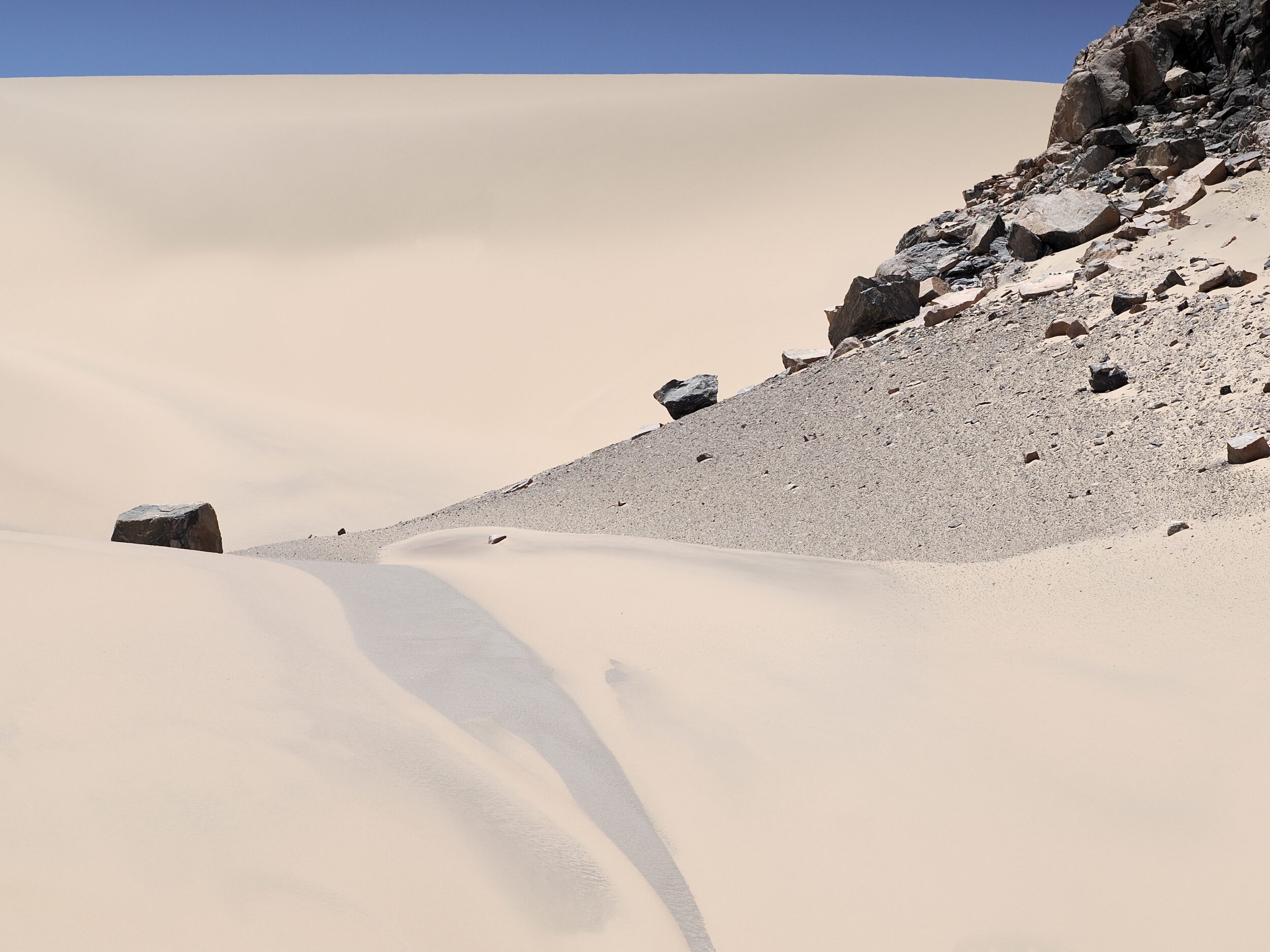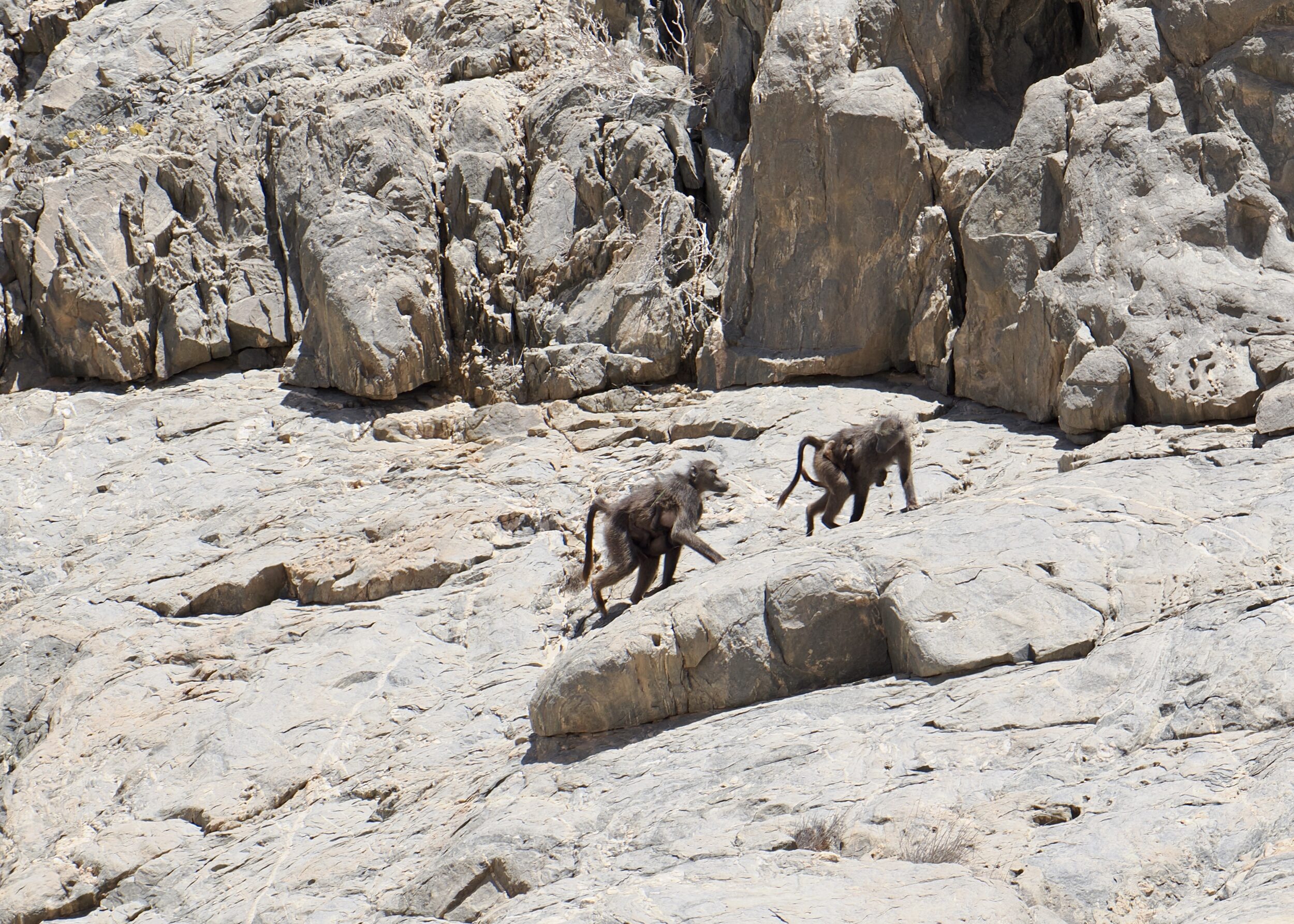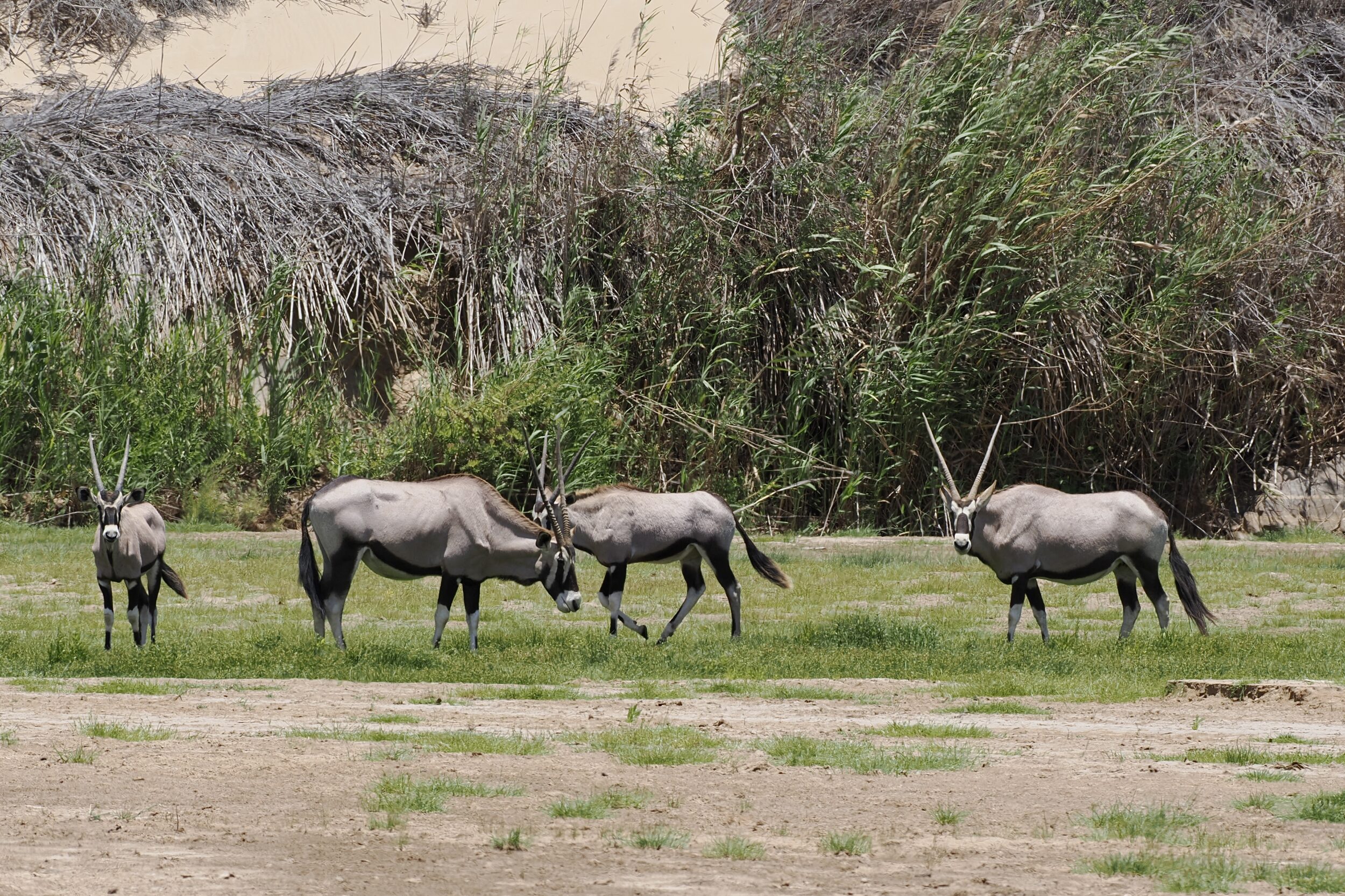This is the current series’ final trio of images taken from the bed of the (mostly dry-surfaced, but intermittently greened/vegetated) Hoarusib.
Only on very infrequent occasions is flowing water readily evident; usually, parts of the riverbed double as road.
All three photos were taken within a single “window” of less than two minutes, as I walked a very short distance, and pointed my 400mm lens north/ish.
At this point the Hoarusib’s source is circa 280 kilometres further inland.
The Atlantic’s “skeleton coast” is less than 20 kilometres distant.
Here, I think, is one of “our” planet’s singular places.
Arguably, no other (relatively) accessible location so richly deserves to be described as “pristine wilderness”…
Comments closed








